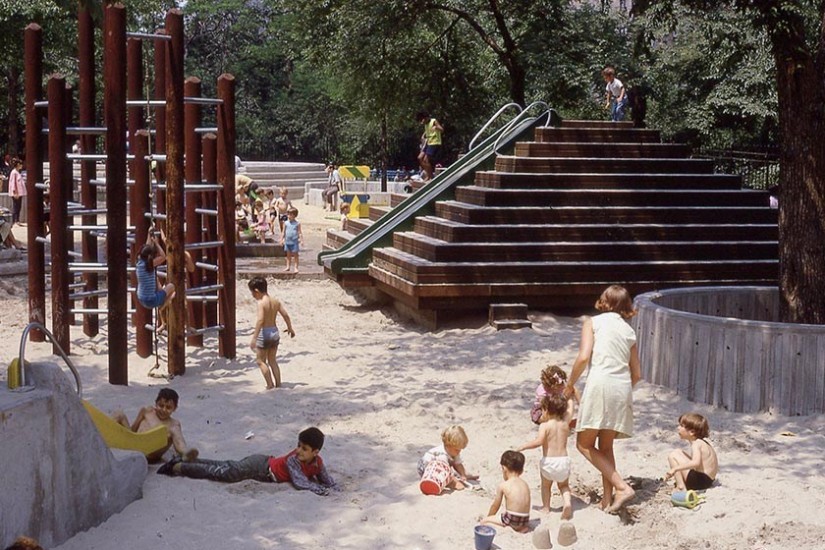Dattner and Friedberg became the Young Turks of radical urban playground design, a professional discipline that hadn’t even existed until their respective projects somewhat inadvertently invented it. The act of designing for children suddenly gained an urbane, avant-garde hipness. The two men preferred the term playscape, an important distinction auguring the end of play as a series of dull interactions with one isolated object after another and offering a new conception of creative play as a fluid, freeform, open-ended map of imaginative experiences and sets of decisions, outcomes, and strategies—a differentiation that reflected a revolutionized understanding of the vital importance of play in mental and physical development. Inspired by the work of pioneering child psychologists Jean Piaget and Erik Erikson, among others, and their theories regarding the connection between cognitive development, adaptive intelligence, and play, Dattner and Friedberg both designed environments to unleash children’s natural instincts to choreograph their own experiences through a non-prescribed network of features enabling individual exploration, social interaction, and a dynamic sense of growing mastery over a variety of challenges. Play, as Friedberg noted in his 1970 book Play and Interplay, was not merely an “expenditure of excess energy,” as previous generations had been accustomed to treating it. (He was thinking of Moses’s pronouncement that the primary purpose of a playground was to “intercept children … and provide a place in which excess energy can be worked off without damage to the park surroundings.”) In contrast, play was “essential to a culture” and designers had a civic duty to facilitate opportunities for both children and adults for creative interactions with the urban environment.
Bold, geometric, and unapologetically monumental, the new playscapes were everything the dull and instantly outmoded playgrounds were not. They were the rebellious New Left’s answer to the authoritarian WPA steamroller approach to public recreation. Like the civic awakening that took place a decade before, the new landscapes were about self-empowerment rather than over-determining, one-size-fits-all behaviors. While each of the new play environments was unique, they were constructed using a budget-conscious inventory of inexpensive and durable materials: cobblestones, bricks, telephone pole timbers, nautical rope, wooden planking, galvanized metal pipes, beach sand, formed concrete. They were the elemental materials of old working-class New York—the building blocks favored also by downtown minimalist sculptors with a romantic regard for the perceived authenticity associated with labor and production—repurposed into futuristic designs that seduced both children and adults.
